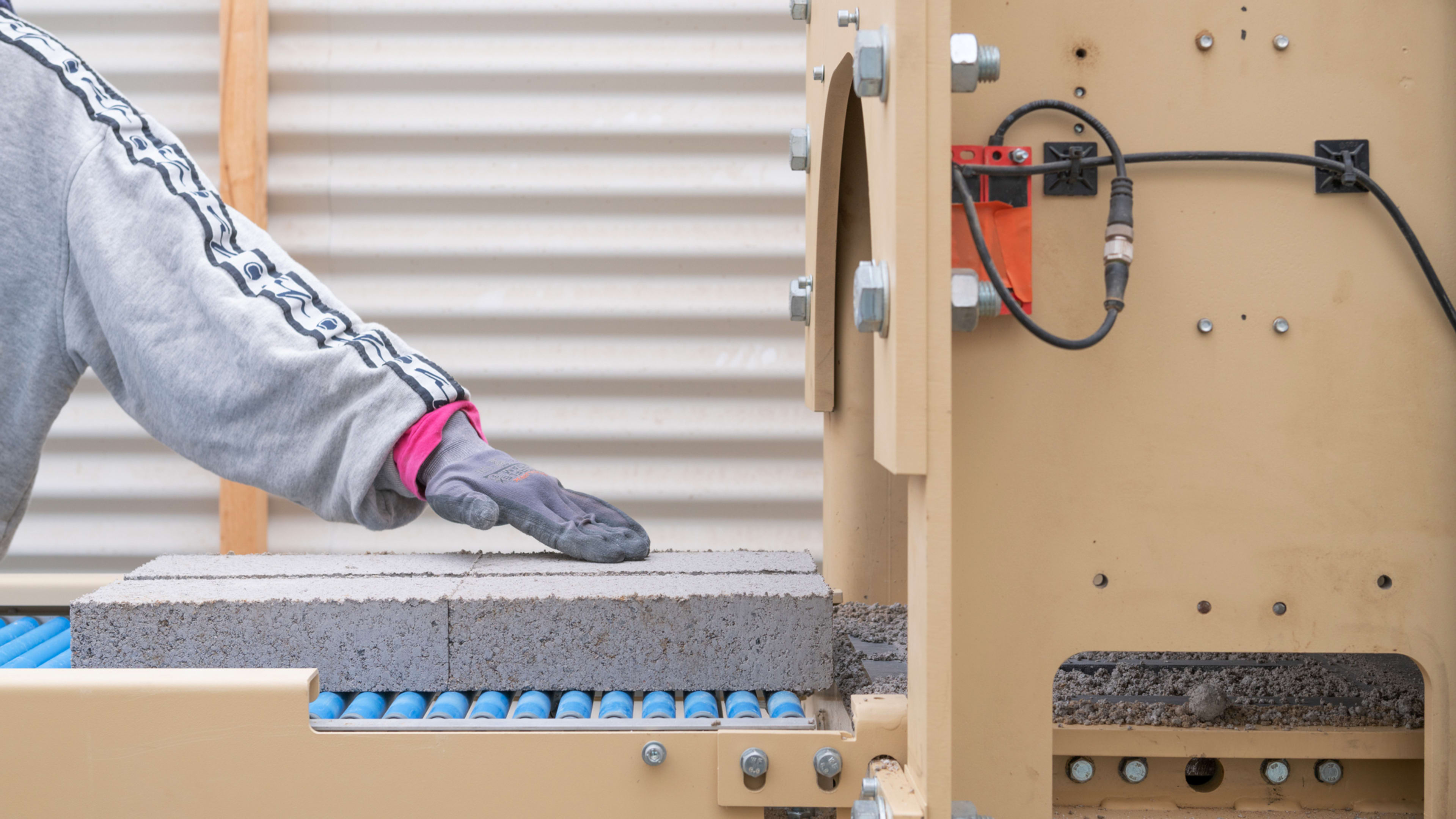Waste from the city of Ghent, Belgium, is being turned into the building blocks of a major cultural institution. For a renovation and expansion of the Design Museum Gent, an innovative new recycling process is turning old bits of broken concrete and glass into the bricks that will cover the museum’s exterior. And due to the local sourcing of base materials and the way the bricks harden, the material has just one-third the embodied carbon of a typical brick.
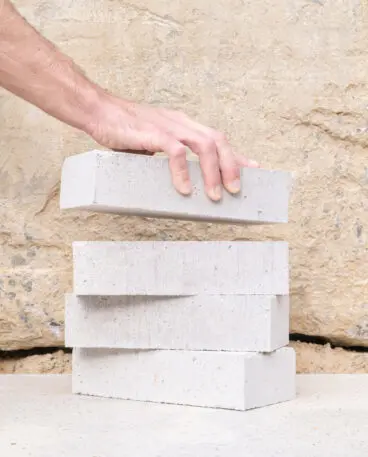
The Gent Waste Brick will be used on the façade of the museum expansion, which has been designed by the London-based architects Carmody Groarke. In partnership with TRANS architects and materials designers BC Materials and Local Works Studio, Carmody Groarke developed a method for grinding construction waste materials like concrete and glass into a mix that, when combined with lime, could be formed into dry cured bricks. Instead of digging up clay to make bricks or importing mass produced bricks from outside the region, the Gent Waste Brick is made with local materials and significantly less energy.
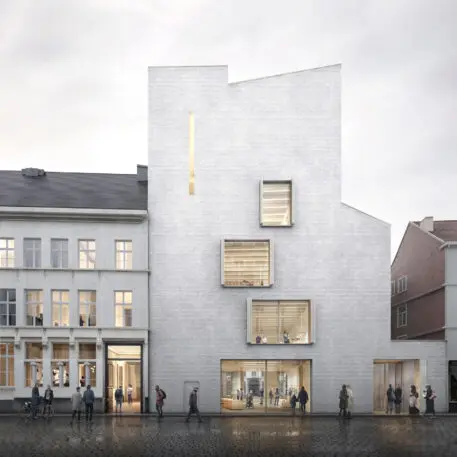
“This is a version of urban mining,” says Kevin Carmody, co-founder of Carmody Groarke. “We’ve basically designed a recipe where you can plug in waste streams locally.”

For most of human history, building materials have been locally sourced, whether stone, timber or the clay used to make bricks. Industrialization and globalization have shifted that production, and now most building materials are made or extracted far from where they eventually get turned into buildings. That system is unlikely to go away, but the Gent Waste Brick proposes an alternative: Local waste streams can be diverted, reprocessed and reused as a kind of locally sourced building material. “63% of it is the waste of the city,” says Carmody Groarke associate Neil Michels.

Made primarily of crushed concrete, masonry, and glass from demolished buildings, the Gent Waste Brick uses materials collected mostly within five miles of the museum. The lime used as a binding agent in the bricks comes from a bit farther afield, but is still regionally sourced. When combined inside a mobile processor the size of a shipping container, the raw materials are formed into bricks that then dry cure over the course of 60 days. In contrast to typical bricks, which are kiln-fired once or even twice at temperatures of more than 2,000 degrees fahrenheit, the Gent Waste Brick is far less energy intensive. And it actually absorbs carbon from the air during its curing process, sequestering carbon dioxide and becoming harder in the process. Over an estimated 60 year lifespan, each brick will produce one-third of the amount of CO2 as a conventional brick.
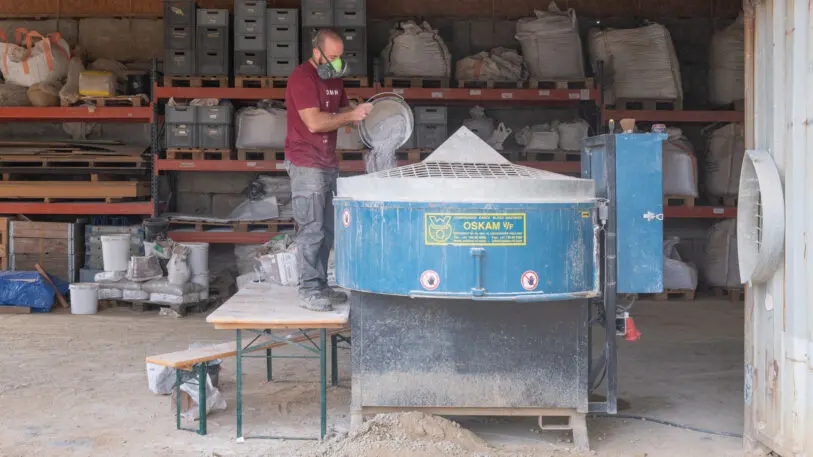
The bricks will be used on the exterior of the museum’s expansion, which is expected to be completed in 2024. Residents of Ghent will be invited to participate in the forming of the bricks as a way of connecting with the city’s history and future. Once the wealthiest city in Europe, Ghent is largely built of brick. Now, demolished buildings are being recycled to reinvent the bricks that make up the city’s architecture.
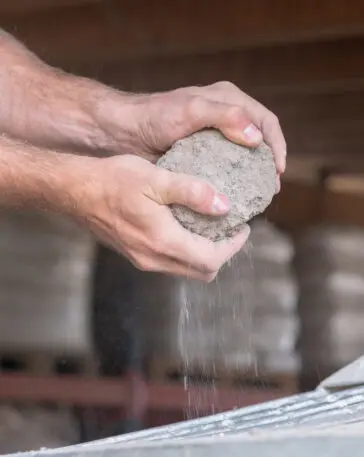
Michels says the process of making the bricks is adaptable to different source materials and could easily be used in other places. Materials like ceramics and old bricks were shown to work in test runs of the new recycled brick, and the designers even explored using more widespread municipal waste. “We looked at using beer bottles from pubs,” says Michels. “Unfortunately there was too much sugar. Even after seven washes it reacted badly with the lime.”
The recipe they settled on does have some downsides. For one, it is more susceptible to the freeze-thaw cycle in wet and cold weather compared to a typical brick. Carmody says this isn’t a major problem, but required the museum building to be designed slightly differently than if it were built with conventional bricks. To shed water away from the facade, the roof has a larger overhang and the window sills are deeper to ensure no freezing happens at the window edges. Carmody argues that unlike conventional building materials that are made to be impenetrable to weather, the local bricks make the museum’s design more reflective of the area’s climate.

The Belgian government has already certified the Gent Waste Brick for use in the museum project, and Carmody says it could easily be applied in other building projects, and even in different shapes. “We’ve made it in this instance in the shape of a brick because we felt it was very appropriate to the locality of Ghent. But there’s no reason why this couldn’t be panels or have larger industrial or commercial application,” he says.

Carmody says his firm is already in talks with other clients about replicating this materials process in other projects, including a potential art gallery in London. But there are some headwinds, as building certifications, regulations and insurance standards differ from place to place, and are often highly specific about the base ingredients of building materials. “There’s no regulation that says if you put all these materials together and mix them up that’s okay,” he says. “If we want to embrace these kinds of ideas, the regulations need to adapt.”

The regulations even limit what such a material can be called. “A brick is a fired material,” says Carmody. “Technically this can’t be called brick under E.U. regulations.” Whatever it’s called, this novel material is showing that even the most time-tested building practices can change.
Recognize your brand’s excellence by applying to this year’s Brands That Matter Awards before the final deadline, June 7.
Sign up for Brands That Matter notifications here.
